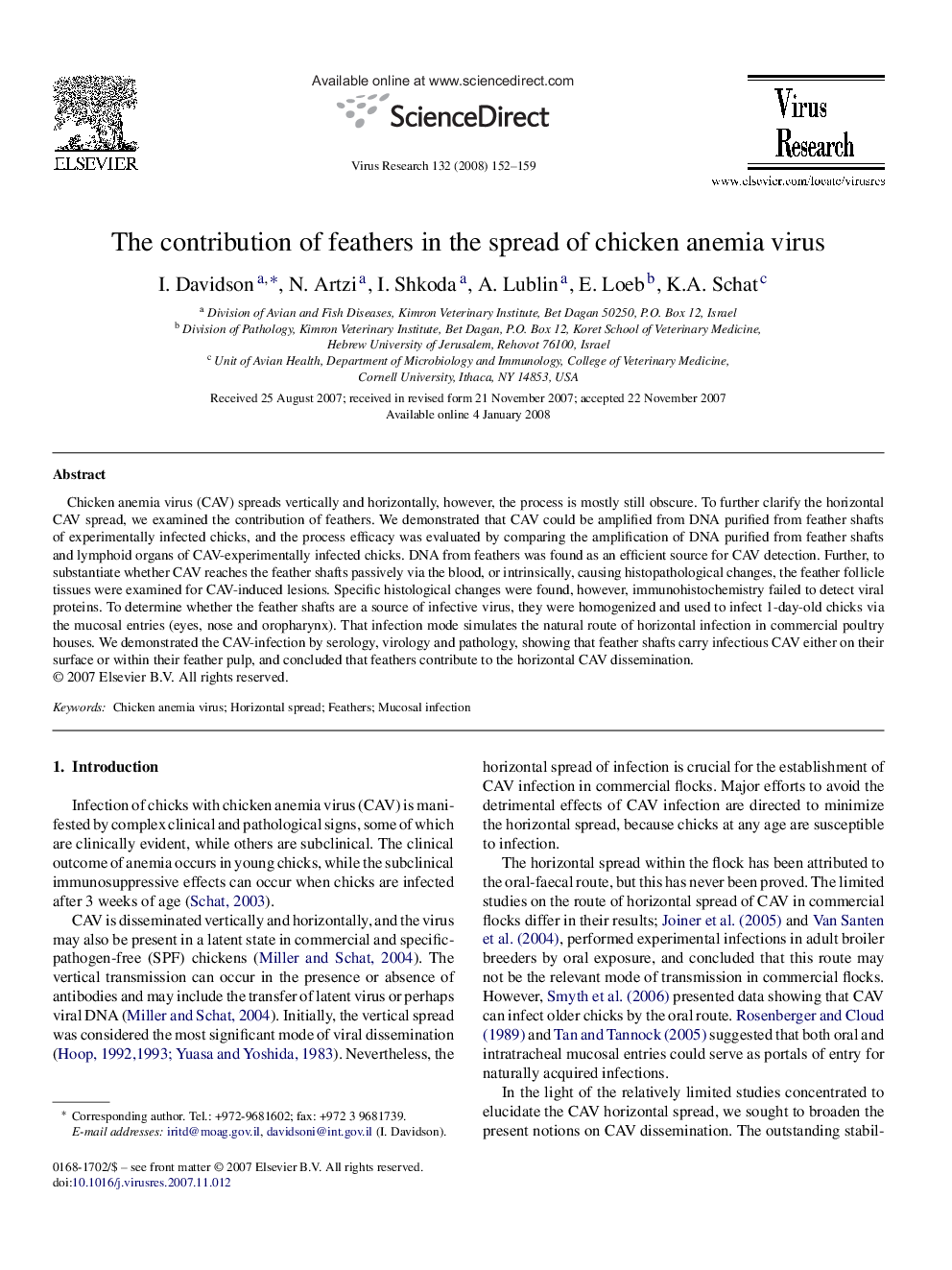| Article ID | Journal | Published Year | Pages | File Type |
|---|---|---|---|---|
| 3430521 | Virus Research | 2008 | 8 Pages |
Chicken anemia virus (CAV) spreads vertically and horizontally, however, the process is mostly still obscure. To further clarify the horizontal CAV spread, we examined the contribution of feathers. We demonstrated that CAV could be amplified from DNA purified from feather shafts of experimentally infected chicks, and the process efficacy was evaluated by comparing the amplification of DNA purified from feather shafts and lymphoid organs of CAV-experimentally infected chicks. DNA from feathers was found as an efficient source for CAV detection. Further, to substantiate whether CAV reaches the feather shafts passively via the blood, or intrinsically, causing histopathological changes, the feather follicle tissues were examined for CAV-induced lesions. Specific histological changes were found, however, immunohistochemistry failed to detect viral proteins. To determine whether the feather shafts are a source of infective virus, they were homogenized and used to infect 1-day-old chicks via the mucosal entries (eyes, nose and oropharynx). That infection mode simulates the natural route of horizontal infection in commercial poultry houses. We demonstrated the CAV-infection by serology, virology and pathology, showing that feather shafts carry infectious CAV either on their surface or within their feather pulp, and concluded that feathers contribute to the horizontal CAV dissemination.
